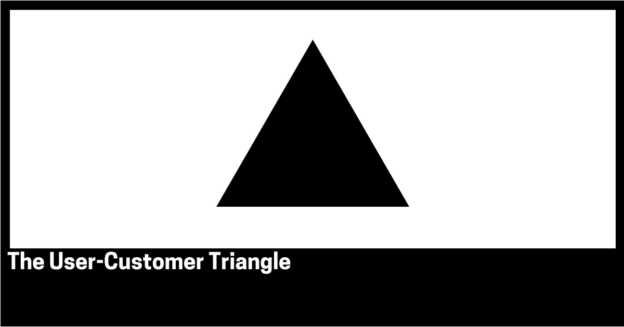I was recently teaching a university class on creativity & innovation and we were discussing what users and consumers were and I raised the following concept of The User-Customer Triangle.
Users are as the name suggests people who use a product, service or solution.
For example, people who use the free version of Spotify.
Customers are people who purchase and trade money for a product, service or solution.
For example, people who buy groceries.
A user can be a customer and a customer can be a user.
For example, again people who buy groceries.
One product, service or solution can have both users and customers.
For example, a parent buys their child a laptop.
The User-Customer Triangle is the relationship between a vendor, a user’s and customers in this last example.
All three parties have conversation between themselves.
And by conversation, it doesn’t need to be a back and forward dialogue, although it can be.
McDonalds can distribute an advertisement that talks to both children and parents at the same time.
Literally both read different things from it.
The child could talk (nag) to their parent to purchase that product, but that is optional.
The User-Customer Triangle is then complete.
This is very similar to a dual reading path.
Disney also does this.
The animated movies are directed at the children, but the parents get a different perspective.

